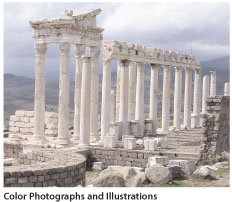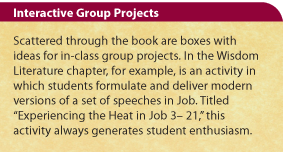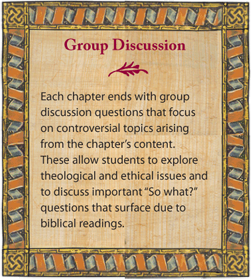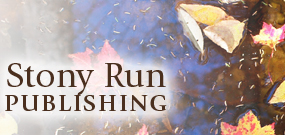





For years I searched for a textbook to use in my introduction to Biblical Studies classes. I wanted something that combined academic rigor with theological sensitivity—something that challenged students intellectually but provided enjoyable reading. I longed for a book that appealed to modern readers—a colorful, multifaceted resource for multitasking students—something that enticed them into wanting to know more about my subject matter.
I needed a text that took readers across the chasms of culture and time to the ancient Near Eastern and Mediterranean worlds of the Bible on a journey they would enjoy and remember. Part of that journey would be to help video-oriented students learn the craft of careful textual analysis. Finally, I wanted a textbook that would invigorate my own creativity, giving me teaching ideas that I could shape to fit my own classroom style.
After years of searching in vain, I decided to write the book myself.
Purpose for Stories and Analogies
A valuable selling point for any textbook is student enthusiasm for reading it. Professors face a continual struggle with motivating students to read assignments and come to class prepared to discuss them. Boring textbooks do little to alleviate this problem. Student satisfaction with course readings goes a long way toward class success.
During the field-testing phase of developing Interpreting Biblical Literature, students consistently reported in evaluations that they most appreciate its engaging writing style. They overwhelmingly said that the stories and analogies (and the sometimes quirky comments) make this book much more interesting to read than their other textbooks. Some stated with obvious surprise that at times they became so engrossed in a chapter that they read more than was assigned.
Media-immersed students grasp concepts better when exposed to a combination of explanations, stories, pictures and active learning exercises. The personal stories in Interpreting Biblical Literature are an important pedagogical pedagogical component of the book. They are not add-ons. Through these stories readers feel more connected to the author and develop a more personal attachment to the subject matter.
Philosophy of Learning
Students grasp academic methods of biblical interpretation best when they personally interpret passages from various genres of biblical literature. Most students’ eyes glaze over when obliged to read too much theory at the beginning of a textbook. They get bored when reading answers to questions that they are not yet asking. Interpretation theories make the most sense to people who actually use them.
When learning becomes problem solving, the results are more satisfying. Students who implement academic methods are much more likely to see their value and to remember them. Form criticism, for example, makes sense when students analyze the structure of different Psalms and ponder how the Israelite people used these songs for different occasions.
All You Need and More
Due to our individual personalities and areas of strength, we rightly focus on different aspects of course content. Interpreting Biblical Literature contains more material than anyone will cover in one semester, providing enough resources to facilitate individual shaping of subject matter and delivery. In addition to chapters on the major genres of biblical literature, this textbook provides chapters on the customs of people in Bible times, the geography and history of the Holy Land, Bible translations and manuscript transmission, an appendix on the canonization process, and eleven color maps.
Building on these explanations are numerous exercises, group discussion questions, and in-class learning activities—all of them tested in the classroom. You can select assignments that fit your personal approach to teaching. The goal is to enhance individual choice by providing enough resources that you can be selective and play to your strengths.
Pedagogical Reasons for Chapter Sequence
Learning increases when students progress from simpler to more complex subject matter, drawing on earlier concepts and experiences to accomplish later assignments. Therefore, Interpreting Biblical Literature does not take students first to the creation stories of Genesis, because the compositional complexity of Genesis can overwhelm beginners. They need to work up to interpreting documents composed of stories from various time periods, redacted together to form a larger whole.
After providing historical and cultural background information and introducing them to the processes of hand-copying ancient books, this textbook first takes students to the short stories of Jonah and Ruth. They look for plot development and character portrayal, examining the whole narrative instead of individual verses. They encounter very foreign cultural concepts about Sheol and levirate marriage, becoming aware of the significance of understanding these beliefs for grasping the plot lines. Then they study Wisdom literature, considering the characteristics of proverbs and seeing for themselves that Proverbs is a collection of sayings from different time periods.
Because the composite nature of Proverbs is so obvious, students encounter this feature of biblical books in a non-threatening way. They rarely become stressed over Proverbs being a collection of collections, nor do they fret over the probability that many of the sayings existed in oral form for some time before being written down. Because of the practical, real-life nature of the proverbial sayings, students readily see that proverbs reflect the cultures of those who wrote them. This realization prepares them to see similar cultural dimensions in other biblical genres.
Interpreting Biblical Literature next has students analyze Job, helping them to experience the hostility in the speeches. They see the animosity expressed when the figure of Job challenges the theology of retribution—a perspective endorsed in Proverbs. Comparing the benefits of living wisely stated in Proverbs (wealth, long life, and many children) with Job’s rejection of the belief that God rewards the righteous introduces students to inter-canonical dialogue. And when they compare the prose beginning and ending of Job with the poetic speeches in Job 3:1–42:6, they grapple with compositional issues.
From Wisdom Literature, the book proceeds to the Psalms, where students learn form criticism and how individual psalms had different functions in the lives of ancient Israelites. They read about music and poetry in the ancient Near East, and once again they see a redacted volume—this time a book that consists of collections of songs that were edited together to form the larger whole. At this point students are ready to tackle Genesis.
They have learned the importance of reading ancient Near Eastern parallels when deter-mining the meaning of biblical passages. They have learned about editorial activity in the collecting of sources from different time periods. They are prepared to see the differences between the creation stories in Genesis 1–2 and to ask how the stories in Genesis functioned in ancient Israel. Because of adequate preparation, they are better able to see the etiological nature of some stories and to recognize different styles of narration. They find Genesis less threatening because of their prior work with short stories, Wisdom Literature and Psalms.
At this point, the sequence in Interpreting Biblical Literature becomes more canonical. The book takes students to the Ancestral Narratives, the Exodus, law codes, Hebrew historiography, prophetic works, the Gospels, Acts, letters, and apocalypses. Students learn methods of interpretation as they interpret. By not presenting a catalogue of methods at the beginning, the textbook avoids boredom and reactions against methodologies. Some students initially dismiss academic approaches to the Bible, but when they actually implement the methods on biblical passages, then they see the value of these approaches.
Of course, professors often alter the sequence of textbook chapters. We have differing views on the best approach to presenting our class content. One certainly does not need to follow the exact chapter sequence employed in Interpreting Biblical Literature to be able to use the textbook effectively. Indeed, I fully expect to improve this textbook as a result of receiving feedback from those who use it.
— Michael Cosby
July 2009



® 2021 Stony Run Publishing | Grantham, PA 17027 | info@stonyrunpublishing.com
